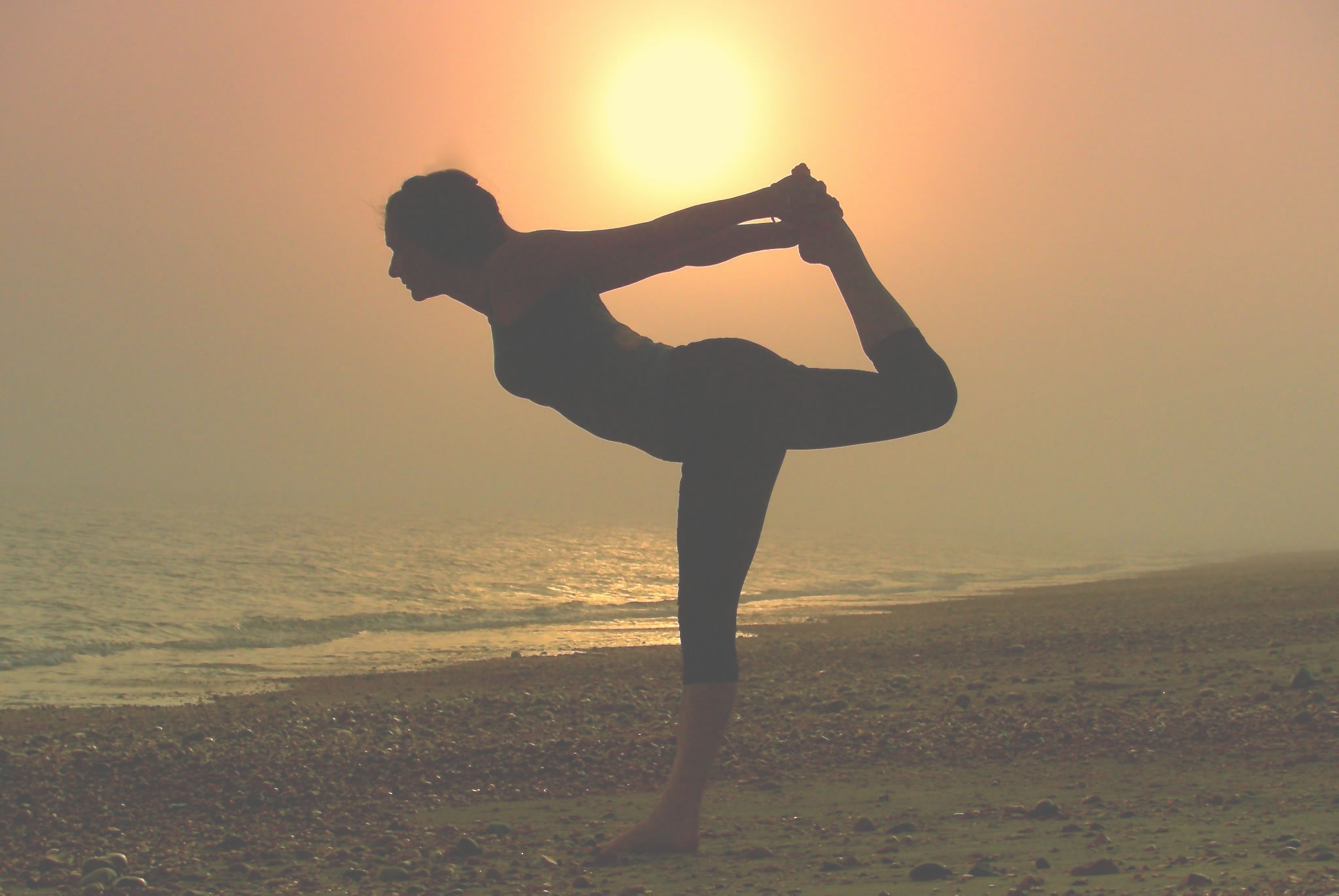Style of yoga
Read all about the style of yoga Jules teaches

"It doesn’t matter how deep into a posture you go
- what matters is who you are when you get there."
Max Strom
Q: What style of yoga is it?
A: The style of yoga I teach is based on Ashtanga Vinyasa with emphasis on the co-ordination of breath with movement in - and between - classic postures.
Through yoga you will have the opportunity to improve your strength, flexibility, balance and peace of mind.
We start and end each class with a short meditation. This frames 50 minutes of intense asana (postures) which is an all-body workout.
We use the ujjayi breath which is a special yoga breath to increase oxygen flow, aid concentration and stamina and create a feeling of calm during the practice (among other benefits).
Yoga is a moving meditation and it is much more than a fitness class. The benefits are for more than just the body.
My approach to teaching
Teaching yoga is a natural extension of my own practice. I can't help but share it! I believe it's about helping you to feel good in your body, and showing you that you can happily sit still and quietly with yourself without going crazy in your head!
I aim for my classes to be challenging but fun. I don’t subscribe to the mantra ‘no pain, no gain’. There is enough pain in this world. We don’t need to create more for the sake of ‘self-improvement’. All those lovely benefits - strength, balance, flexibility - will come.
Enjoy the practice for what it is, and you’ll be amazed by what it will give you.
I teach with a backdrop of beautiful music to inspire and invigorate. You can see my yoga playlists here or follow me on Spotify.
Q Do I have to be bendy?
A: No at all. Nor is yoga simply about becoming bendy. If you're very inflexible, yoga will work wonders to ease that tension and open up your body. But it will do much more than that.
Yoga is about bringing the body into balance with increased strength as well as flexibility. The two go hand in hand. As you become stronger it is important to keep muscles supple. Equally, as you open the body and become more flexible, this has to be supported with strength.
Q: What level are the classes?
A: My classes are designed to suit the often mixed-ability students who attend regularly. Everyone follows the same flow of postures but I give variations throughout the class for beginners, more advanced yogis and those with injuries.
Q: Do I have to learn all the theory?
A: I easy answer is no!
“Yoga is 99% practice and 1% theory.” - Sri Krishna Pattabhi Jois
The beauty of the practice is that you can learn everything you need to learn through your body on the mat. In fact, it’s often best to leave your mind out of it!
Think of the difference between reading a book on sailing, and going out in a boat on the water.
There is a lot of ‘theory’ or philosophy in yoga, which you can discover, and this is incredibly vibrant and valuable in itself. But this wisdom is something that was gleamed over thousands of years from experience of the practice, in order to help pass down the teaching from guru to student.
The mind doesn’t ‘understand’ yoga and then teach it to the body, rather the body ‘gets’ yoga and the mind catches on if and when it’s ready! In truth, the experience of ‘doing’ yoga is much more vast and all-pervading than the mind could ever grasp.
Q: What is Ashtanga Vinyasa?
A: Ashtanga Vinyasa is a style of yoga which has become very popular with celebrities. Variations of Ashtanga are often sold with other names such as power yoga.
Whilst I don't teach the prescribed Ashtanga series exactly as laid out by K Pattabhi Jois, who popularized the Ashtanga method, my teaching definitely incorporates the ‘eight limbs’ of yoga (ashtanga) after which it is named. Vinyasa means flow.
Patanjali’s Yoga Sutras outlined eight elements of the yogic journey which give us guidance on how to approach the practice but which also naturally and essentially spill over into everyday life.
In brief, these are:
Yama : Universal morality
Niyama : Personal observances
Asanas : Body postures
Pranayama : Breathing exercises, and control of prana
Pratyahara : Control of the senses
Dharana : Concentration and cultivating inner perceptual awareness
Dhyana : Devotion, Meditation on the Divine
Samadhi : Union with the Divine
(Outline by William J.D. Doran)
If you'd like to find out more about yoga philosophy, let me know and we can discuss more or I can recommend some great books.
What her students say:
“Jules has a fantastic amount of knowledge and enthusiasm for Yoga and this shines through in her teaching. The classes are for all ages and abilities and you’ll soon find you’re benefitting not just in your body, but equally the mind and sole alike. Say goodbye to the stresses of the 9-5, it really works… you’ll leave smiling, inspired and energized.” - Craig
“Jules has an in-depth knowledge of yoga postures, meditation and philosophy, as well as a gentle yet confident manner and years of teaching experience. Whether you are a beginner or experienced, Jules will help you let go of thinking and deepen your practice by concentrating more on your breath and body." - Sean
Read more testimonials.